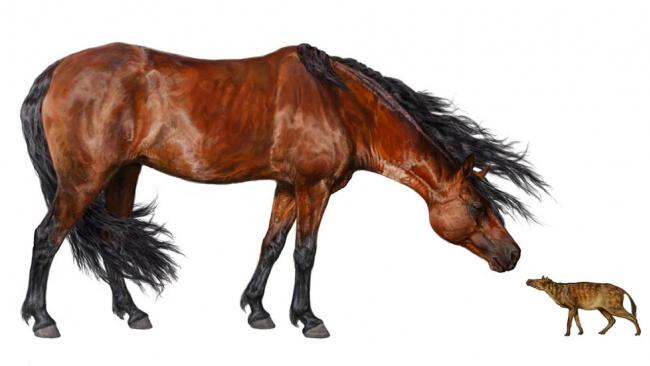By: By Terrell Johnson
Published: November 4,2013
Led by University of Michigan paleontologist Philip Gingerich and colleagues from three other colleges and universities, the study was released on Nov. 1 and revealed that mammalian "dwarfing" occurred during a global warming event that took place about 53 million years ago.
That warming event followed a much larger, similar period that scientists have long known about, the Paleocene-Eocene Thermal Maximum of about 55 million years ago. Global temperatures rose about 9 to 14 degrees Fahrenheit at the peak of the PETM, which lasted about 160,000 years.
"The fact that it happened twice significantly increases our confidence that we're seeing cause and effect, that one interesting response to global warming in the past was a substantial decrease in body size in mammalian species," Gingerich explained in a press release.
The smaller event, known as Eocene Thermal Maximum 2 (ETM2), lasted between 80,000 and 100,000 years and saw a peak temperature rise of about 5 degrees Fahrenheit.

Abigail D'Ambrosia, UNH
Jawbone fossil of the early horse Hyracotherium. Researchers found
that its body size decreased 19 percent during a global warming event
about 53 million years ago.
Gingerich and his colleagues in the study — which included scientists from the University of New Hampshire, Colorado College and the California Institute of Technology — studied teeth and jaw fossils of early hooved mammals and primates that lived during the ETM2, and were collected in Wyoming's Bighorn Basin.
The response of an early horse known as Hyracotherium, which was about the size of a small modern-day dog, was particularly telling. The hyracotherium fossils they studied showed that these animals' bodies decreased in size by about 30 percent during the PETM and about 19 percent during ETM2.
After both warming events, the fossil record showed that hyracotherium bounced back to its pre-warming size.
"Interestingly, the extent of mammalian dwarfism may be related to the magnitude of the hyperthermal event," said Abigail D'Ambrosia, a doctoral student from the University of New Hampshire who also participated in the study.
Will Clyde, another team member in the study from the University of New Hampshire, said studying the fossil record is especially valuable in light of the parallels between ancient global warming events and the climate change the world is experiencing today.
"Developing a better understanding of the relationship between mammalian body size change and greenhouse gas-induced global warming during the geological past may help us predict ecological changes that may occur in response to current changes in Earth's climate," he added.
Read the full study at the University of Michigan.

Danielle Byerly, University of Florida
An artist's rendering of the early horse Hyracotherium (right)
alongside a modern-day horse. Researchers found that Hyracotherium body
size decreased 19 percent during a global warming event about 53 million
years ago.
No comments:
Post a Comment